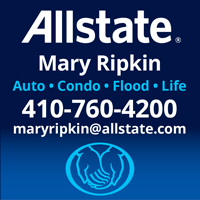
By Jill Mulford
One enjoyable activity for residents of the Chesapeake Bay and Queen’s Landing is crabbing. As I’ve watched the crabbers go back and forth in their boats and spotted the crab pots in the bay, I‘ve wondered about recreational crabbing. Can anyone take part? Are there licenses and regulations to follow? I started my search at Chesapeake Outdoors, which sells most everything you could ever need for fishing and crabbing, including licenses. The gentleman behind the counter was happy to answer a few questions and provided me with a magazine called, “Maryland Fishing Guide 2016.” This is a publication written by the Maryland Department of Natural Resources.
In a nutshell, it says that a recreational crabber needs a license if they use a trotline, a collapsible crab trap, a net ring, a seine, or an eel pot for their own bait. If you use gear other than the above and catch more than 2 dozen male hard crabs or more than 1 dozen male soft crabs, you also need a license. This will cost you $5.00 if you are a MD resident. If you already have a fishing license, you get a discount on the crab license. It will only add another $2.00 to your fee. I also found out that no one can go crabbing on Wednesday unless you are using a crab pot from private property or using a hand line or dip line. But if a state or federal holiday falls on a Wednesday, all bets are off and the crabber is allowed out. Though the season runs from April 1 to December 15, there are certain times you are allowed to crab depending on the time of year. Though a little more complicated than this, it’s basically sunrise to sunset. I also learned that recreational crabbers may not sell crabs, and that there are minimum sizes on crabs, which is dependent on what month it is. You also need to know your sooks (females) from your jimmies (males) because there is no possession of an egg-bearing crab or any female hard or peeler crab. I went on to read the regulations and became more confused because different rules apply to private waterfront property and to different areas of the Bay. Find out more about crabbing regulations.
I
I found it much more fun to ask Kenny Leitch, an expert around and about, who has been crabbing his whole life. His stories and adventures were much more entertaining than reading the rules and regulations! He knows his sooks from his jimmies and has a special freezer just for his crab catches. He let me know he uses razor neck clams in a mesh bag for bait but most crabbers use chicken necks. He also likes to use bull lips when he can get them but they are a huge chore to slice so he doesn’t recommend them for the casual crabber. He was full of anecdotes about crabbing because it’s clearly second nature to him, but of course he preferred to not reveal his secret crabbing locations. Kenny recommended the book Beautiful Swimmers written by William W. Warner in 1976 who won a Pulitzer Prize for his writing about the Atlantic Blue Crab and its Chesapeake Bay environment. Since much has changed in our knowledge of the crab population since then, recently “Beautiful Swimmers Revisited” has been released on video and premiered on Maryland Public Television April 26. Both are worth a look. I asked Kenny what else I would need to know if I wanted to go out in my kayak with a hand line. Well, I might want gloves so I can check the underside and measure them. I’d also need a basket to keep them in. That’s about it. I might try it, but then what to do when I get them home? Hmmmm, now that could be a whole new article! Maybe I’ll just stick to eating out for my crab fix!


